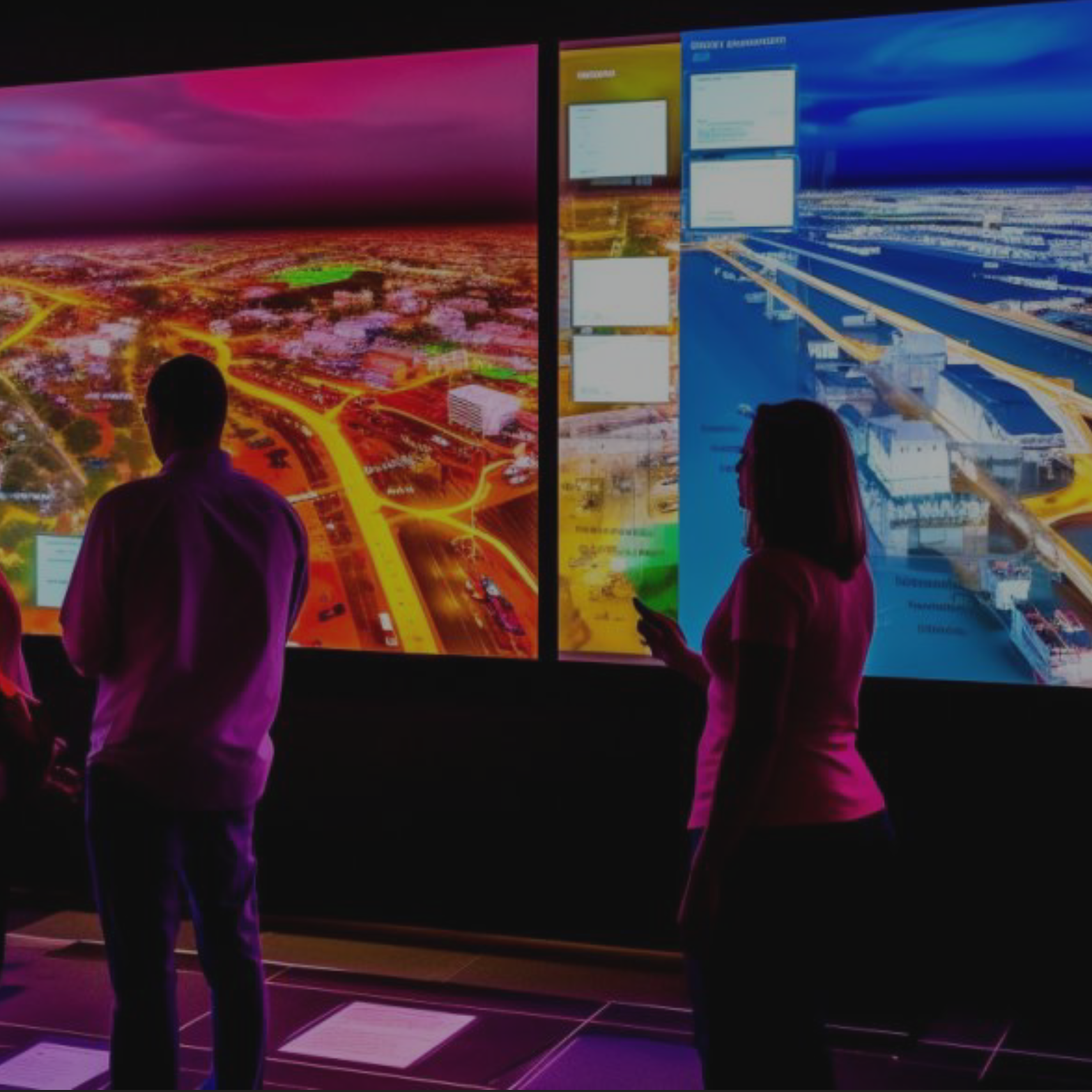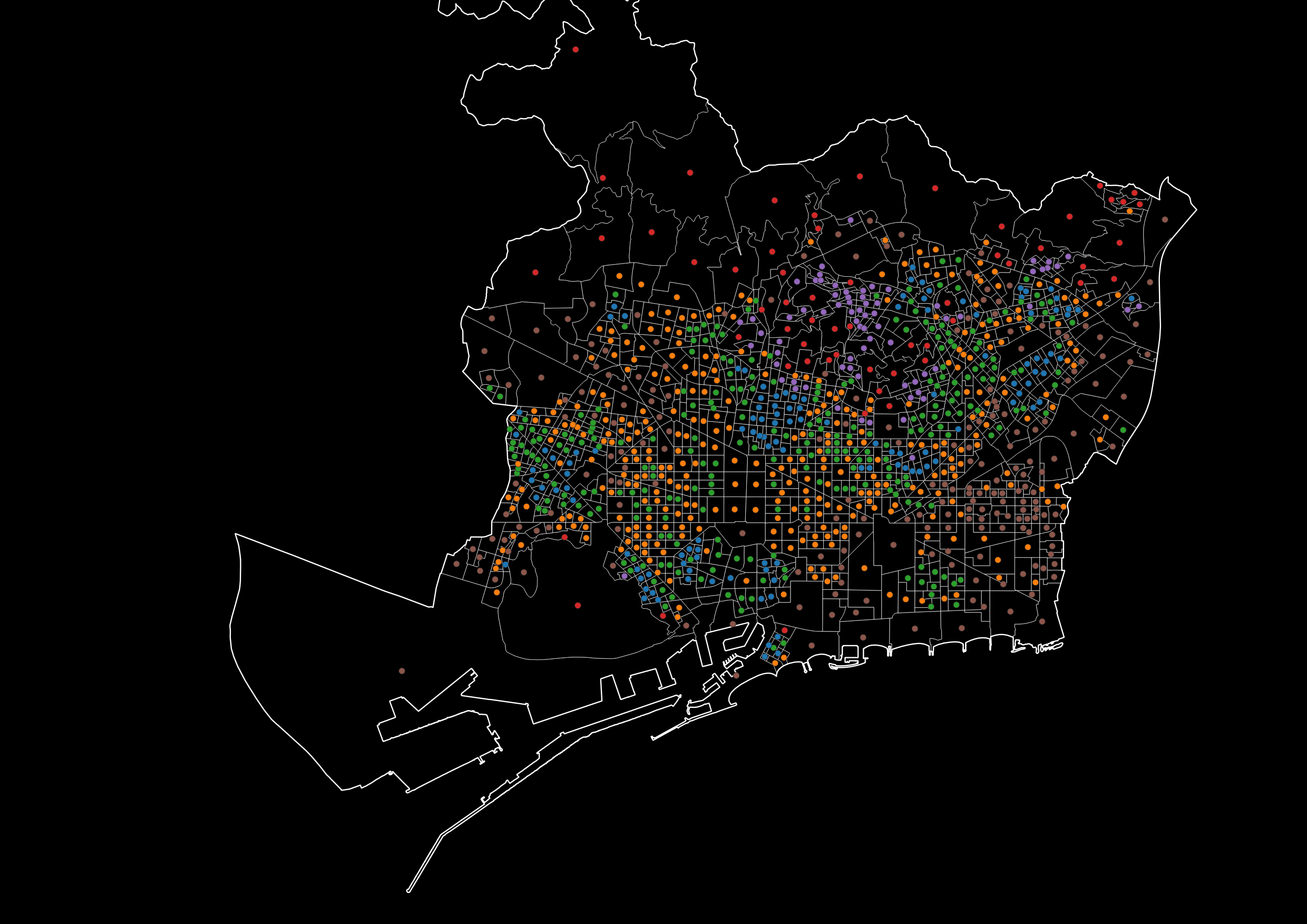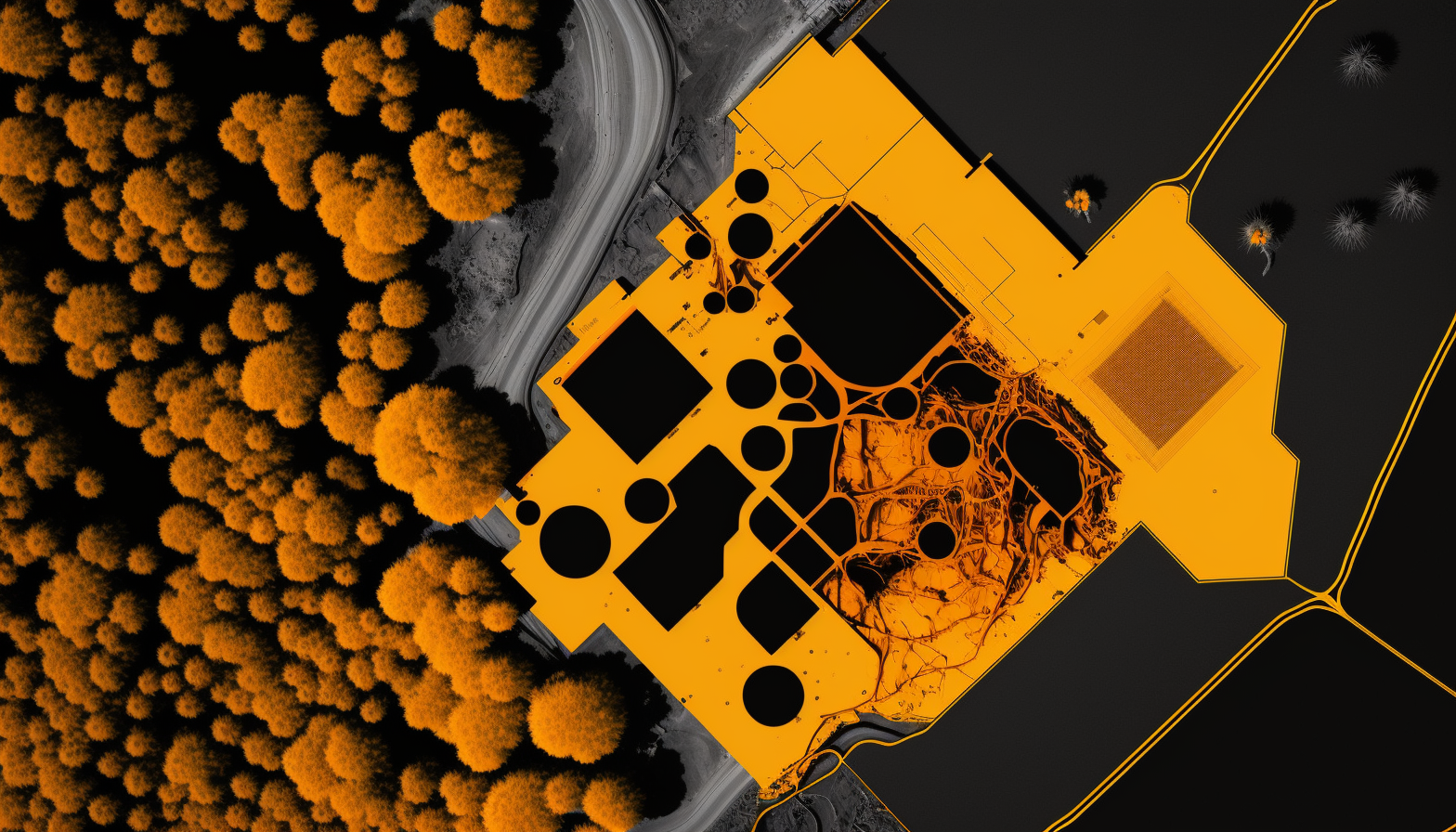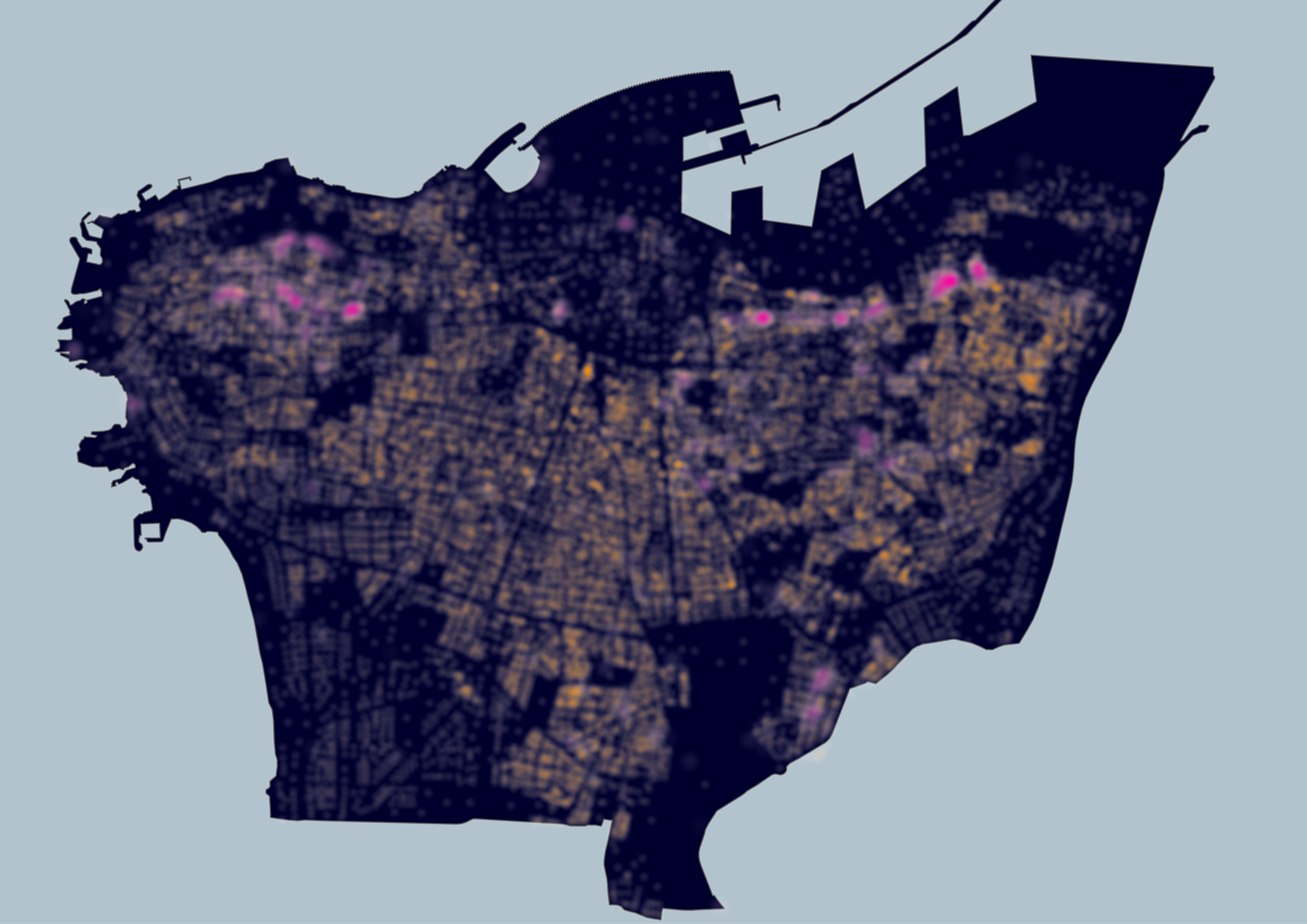AI in Urbanism focuses on practical applications of AI within urban planning and design. Through method-driven pedagogies, this 7-week module is aimed at taking students with a basic understanding of machine learning, to applying deep learning algorithms to urban-scale issues.
Syllabus

Credits: City Intelligence Lab, Austrian Institute of Technology
Artificial intelligence (AI) has permeated almost all facets of our digital and physical world. By now, it is a rarity to find an aspect of our day-to-day lives that has not been somehow influenced by an AI-driven technology. Even within the built environment, an industry that is known for its sluggish uptake of new technology, AI has been applied toward detecting anomalies in city-wide datasets, generating and optimizing urban morphologies, increasing the speed of onerous urban-scale microclimate simulations. Students will learn to identify problems amenable for AI-driven intervention, develop and train AI models to gain hands-on intuitions about hyperparameter tuning, and build interprocess pipelines for deploying AI models locally.
Learning Objectives
The course starts with a brief introduction to machine learning and an overview on major breakthroughs in the field throughout the last few years. After a series of inputs on the basics of data, its pre-processing and feature selection, we give a dense input of selected machine learning models including examples of their application in practice. We will dive into two to three models in more depth, showing how to train and use them via python. Finally, the students will deploy their own micro-ml-app online using Hugingface Spaces.
Faculty
Faculty Assistants
Projects from this course
FOLLOWing FOOT.AI
Unraveling Footfall Patterns for Enhanced Urban Planning: A Spatial and Temporal Analysis Introduction Footfall prediction plays a crucial role in urban planning decision-making processes. Understanding the intricate relationship between footfall and its two dimensions—space and time—is essential. In this project, we delve into the workflow and key findings of a project aimed at comprehending the … Read more
GenCity.ai
Alejandro Aravena, renowned for his role in facilitating the recovery of a city struck by an earthquake and a tsunami, asserts that Participatory design transcends mere inclusivity and offers enhanced efficiency. Conventional methods may not yield the desired effectiveness, necessitating a reevaluation of the tools employed for participation.Barcelona, for instance, has already experimented with a digital … Read more
SKY COMPUTE
INTRODUCTION Climate change is an imperative global concern demanding meticulous attention. Its ramifications encompass an array of profound consequences, necessitating urgent action. Rooted in anthropogenic greenhouse gas emissions, this phenomenon engenders a persistent alteration in Earth’s climate patterns, characterized by escalating temperatures, heightened incidence of extreme weather events, and encroaching sea-levels. In this context, comprehending … Read more
Gridscape.ai
INTRODUCTION Urban planning decisions have a significant impact on the development of cities, and using machine learning can provide decision-makers with valuable insights to make informed decisions. By clustering urban areas based on various factors such as population density, built density, POI density, green cover, and build diversity, we can reveal spatial patterns that can … Read more
BullerbyNet
The Core challenges of urban childhood As cities grow and develop, there is often a lack of safe and child-friendly spaces for children to play, walk or bike alone. The increase in traffic and air pollution makes it challenging and unsafe for children to travel on foot or by bicycle. Crime and social fear also … Read more
BEYlink
RE-frame and Connect Public spaces in a city, such as pathways and non-constructible parcels, are not utilized to their full potential. As a result, they create voids and detachment of citizens from their city and do not provide any meaningful benefits to the community. Using machine learning algorithms as a tool for public organizations to … Read more
ONE MUMBAI!
Climate change is increasing the frequency and severity of extreme weather events, and cities like Mumbai with a population of over 12 million people, is particularly vulnerable to the impacts of climate change. In fact, studies have shown that Mumbai is one of the cities most at risk from rising sea levels more intense floods, … Read more













